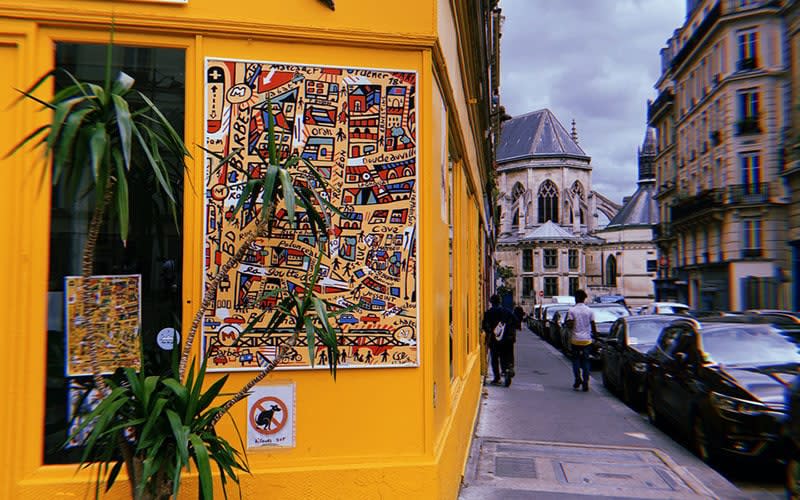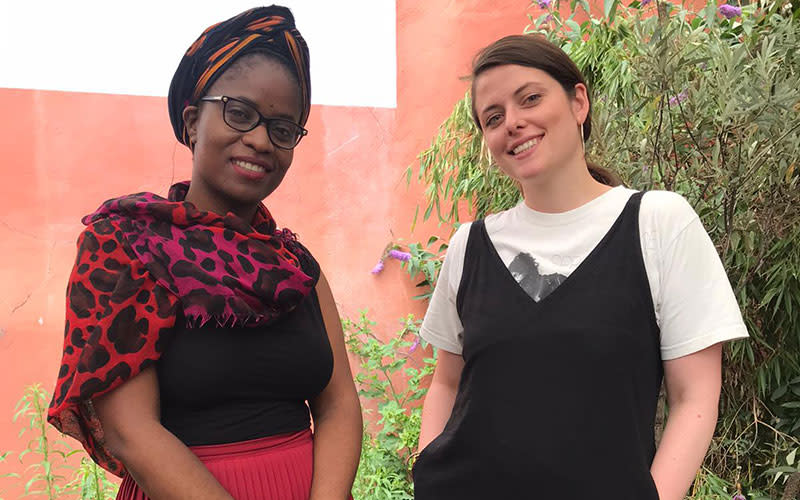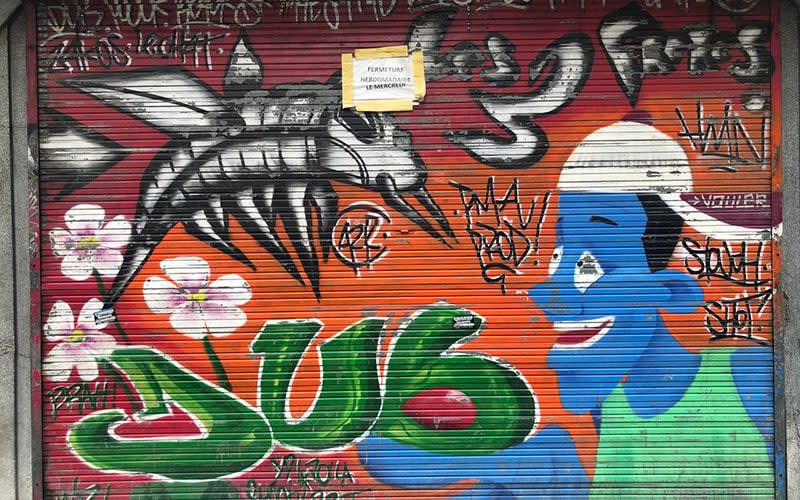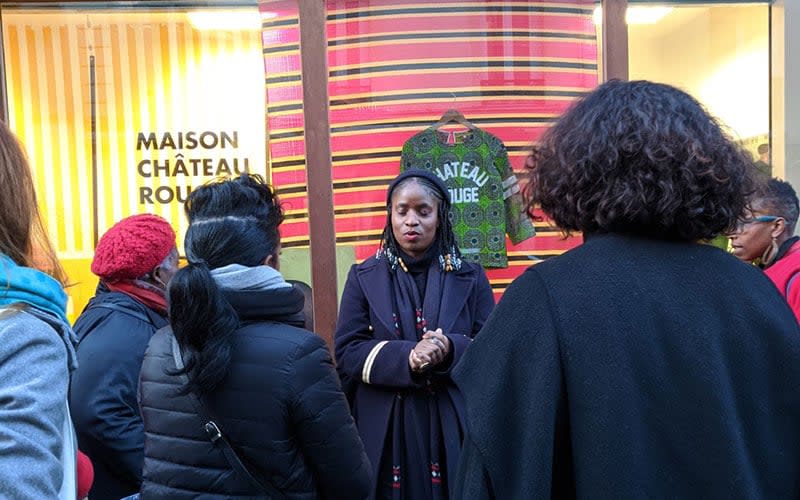Meet the black tourism entrepreneurs telling a fuller story of Paris

When I speak about Paris, the place where I live, I know that for most it conjures up certain images: la Tour Eiffel! Macarons! Croissants! And when we speak about Parisians, many imagine a certain kind of person – white, bourgeois, nonchalant. And while this rather clichéd version of the Paris of the imagination does indeed exist, there is so much more to this varied, noisy city that I have made my home than that rather limited stereotype.
It was in part as a response to this one-dimensional external perception of the French capital that 31-year-old Jacqueline Ngo Mpii founded Little Africa in 2014, a tour company, publishing house and cultural agency with the mission of “connecting the African diasporas to the world, and the world to the diasporas”.
Jacqueline’s tours take place in la Goutte d’Or, also known as ‘Little Africa’, a working-class neighbourhood that has been branded a ‘no-go zone’ by some cultural commentators. This densely populated, lively pocket of the north of Paris lies to the east of the Montmartre hill, but while (in non-pandemic times) tourists arrive by the bus-load to visit the neighbouring Sacré-Coeur, the vast majority never set foot here.

The idea for Little Africa was born after Ngo Mpii spent time travelling in the US and Latin America and repeatedly experienced surprise from the people she met that she was both black and Parisian. Jacqueline is of Cameroonian descent, was born in Cameroon and moved to Paris as a child.
“People know about France, they know about Paris, but they have no idea that there are black people here,” she told me. “There are untold stories about the diaspora. I wanted to create something that doesn’t talk about the obvious diaspora, which is African Americans, but something that talks about the African descent from the continent and from the history of colonisation and immigration.”
There are no official statistics about the demographics of Paris because in France the census does not collect data on ethnicity or religion, nominally in order to protect minority populations from discrimination and uphold Republican values of equality. However, Paris is indeed a multicultural and multi-ethnic city; statistics that are available suggest one in five inhabitants of the city of Paris are immigrants and among under-20s, more than 40 percent have at least one immigrant parent.
On the tour I join, Jacqueline explains that la Goutte d’Or has been home to different kinds of immigrants to the city throughout history, and was the setting of Emile Zola’s novel L'Assommoir, a study of alcoholism and poverty in 19th-century Paris. The first immigrants were French country folk, then other Europeans, including Jewish people from Eastern Europe, then North Africans and, most recently, sub-saharan Africans from former French colonies, who began to arrive in the second half of the 20th century after decolonisation.

But while multiculturalism is worn more comfortably by London, and celebrated (although of course not without its own post-colonial issues, and not without racism), the French establishment is generally resistant, even hostile, to the idea of pluralistic identities and cultural particularities.
Amid the global wave of protests that emerged in June following the killing of George Floyd by police in the US, Paris also saw its own wave of demonstrations, centered notably around the death of a young black French man, Adama Traoré, in police custody. In light of this uprising, it may become more difficult for French institutions to continue to approach policy in the ‘colour blind’ way that has been the norm.
As we turn off the noisy Boulevard Barbès onto the side streets that form the more villagey Goutte d’Or, the noise level drops and the faint scent of incense pervades, while the streets are lined by colourful patterned wax fabrics displayed outside independent stores. The focus of this particular walk is fashion and how young creators are using traditional African production methods and designs to create cool, contemporary brands.

The first stop is the chic boutique Peulh Vagabond, owned by French-Senagalese designer Dyenna Diaw, who grew up in the Goutte d’Or neighbourhood. The garments, on display in neat rows, blend traditional African hand-weaving techniques with contemporary tailoring (think tailored trousers and a matching gold-weave crop top) – her designs attracted the attention of Beyoncé, and the singer’s picture wearing one of Diaw’s suits is displayed in the shop.
The idea behind Little Africa is not only to create curated cultural experiences but also to lift up other black-owned businesses, including other black-owned tour companies such as the popular ‘Black Paris’ walks. Jacqueline has also published an ‘Africa in Paris’ city guide book, available in English and French, which sells particularly well in the US.
The largest swathe of Jacqueline’s guests are American, of whom, she tells me, around 90 percent are African American, though she also has tourists from Russia, England, Belgium and Germany, as well as China, South Korea, Japan and Brazil. As she takes guests around the independent boutiques, many shop for clothes or gifts to bring home, in turn putting money back into the local economy. The tone of the tour is respectful and guests are asked to check with Jacqueline before taking photographs.

After Peulh Vagabond, we head to Maison Château Rouge (named after the local area), a laid-back designer ‘concept store’ producing small-batch collections of clothing and homeware, blending African wax fabrics and pop iconography. The brand, founded by Youssouf Fofana, a Parisian of Senegalese descent, has put the area on the map in France and internationally, notably collaborating with Nike on a now sold-out range of Air Jordans.
Next it’s on to the boutique of Sawa, a made-in-Africa trainers brand, then Mazalay Couture, an immensely popular local designer and tailor, who has a constant stream of customers coming in and out to get measured up for custom suits and dresses made from traditional kente cloth and other woven fabrics.
After a detour through the bustling Dejean open-air market, we finish the tour in the Institute of Islamic Culture, whose low-key facade hides a huge, sun-dappled courtyard café. Here, we eat tagine and discuss what’s next for Little Africa and tourism in Paris more generally.
Jacqueline believes less clichéd experiences such as the Little Africa tour will be more sought-after following the Covid-19 pandemic – for both the practical reason that social distancing means large tour groups and busy queues are off the cards for now – but also because the experience of the pandemic may have urged people to seek more meaningful and authentic experiences.
“When you go [to more touristy spots], you don’t actually talk to people – you just ask directions or prices. You really don’t have a conversation with French people. I think that people are more attached now because of everything that happened with their values – now maybe they will be searching for values in what they experience when they travel.”
And indeed, Jacqueline believes the Goutte d’Or neighbourhood is one of the most authentic spots left in the French capital.
“In Paris, working-class neighbourhoods have changed and actually la Goutte d’Or, it’s probably the last bastion; gentrification is coming, but very slowly. I see the Goutte d’Or is making resistance to gentrification. People have been talking about gentrification here for 10 years – but it’s still the same,” she says.
“Of course there are bad things – I don’t deny them – but it’s like everywhere else, and that’s one of the things I wanted to share. This Paris is the authentic one, the Paris of the people, the Paris of the hidden, secret places – that’s the Paris that I love.”


